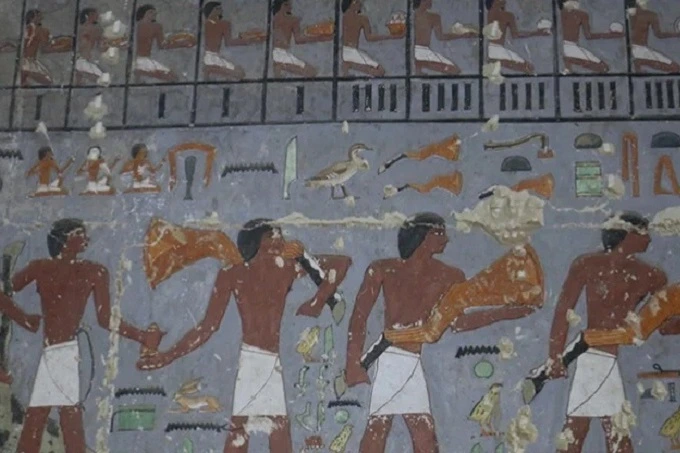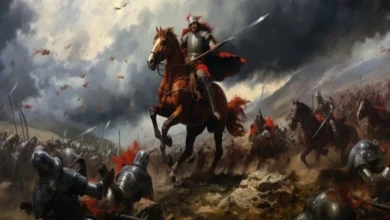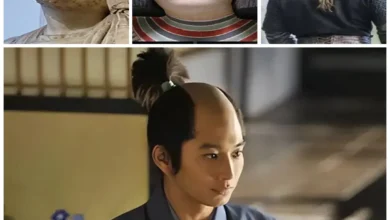Egypt, the haven of the mysterious Queen

In Saqqara, 30 km south of Cairo, recent discoveries make an important contribution to the knowledge of the historical period of the end of the Old Kingdom. During the research in the area of the burial complex of Pharaoh Djedkara Isesi (2420-2380 BC), Egyptian archaeologists identified the only grave of an official who lived 4,400 years ago, and the name of the Queen is still unknown.
Especially striking is the extraordinary preservation of paintings, still bright colors that cover the walls of the hallway. The eastern wall is entirely occupied by a long list of proposals and the ritual killing of cattle; the western, on the other hand, is decorated with a typical motif of the “palace façade”.
In fact, by excavating the upper chamber of offerings with an L-shaped plan, access was gained to the underground part: the descending corridor, the vestibule, the vestibule and the sarcophagus room.
From here, you enter the burial chamber, which is not painted, but originally it must have been almost entirely occupied by a limestone sarcophagus, found in pieces thanks to the intervention of thieves who visited the tomb already in antiquity.
Nearby, to the northeast of the pyramid of Djedkara, appeared a column of red granite from Aswan with the inscription: “She sees Horus and Seth, great scepters, great prayers, the king’s wife, his beloved Setibhor.”
The inscription on the column lists the names of the wives of Jedkare, the previously unknown Queen Setibhor, owner of the pyramidal complex of Saqqara.

Setibhor is, therefore, the name of the previously unknown Queen, wife of Djedkare and, for the time being, owner of the funerary complex, who has hitherto been anonymous.
The portico of the Queen’s temple contained two palm-like columns of red granite. Columns of red granite were used in monuments dedicated to pharaohs, but they are rather unusual for queens.
This pyramidal complex is the largest for a queen of the ancient kingdom, one of the first to be built in South Saqqara, and is characterized by elements that belonged only to kings, such as funerary temple-shaped columns.




